What Are The Best Advertising Strategies For Luxury Brands?
- 7th May 2020
- 3746
- 0

Advertising for luxury is a business, creating and catering to desires and aspirations.
The entire advertising strategy for luxury brands can be summed up in that one sentence. But in this chaos of different advertisements flying towards consumers at top notch speeds, how do luxury brands stand out?
In this article, we’ll explore the adventure that is Advertising for Luxury -
A few distinct tactics and some age old approaches that work like a charm, even today.
1. Luxury promotes lifestyle
While advertising for luxury brands, the narrative is given more emphasis than the product. It is the style of living that is at the center of the messaging.
Luxury advertising carries the customer, placing them in the sophisticated life they deserve! They can imagine the spotlight, hand-delivered, with that Hermés Birkin Bag!
Envisage the Cartier diamonds adorning their balletic neck and the attention that comes with it.
Luxury advertising is aimed at making the customer fantasize and covet their brand.
Look at this commentary made by Daniel Ng.
The marketing done by Range Rover, has successfully accomplished the difficult task of positioning their product as a rough adventurer, while at the same time, maintaining its image of being a luxuriously refined automobile. The spirit of endurance at the heart of their advertising has moved Daniel’s ambitions.

He can feel the blood thumping thrill of driving through the Sahara Desert and the ego boost that comes with an invitation to a formal evening event. For him, the car is an aspiration because of what he imagines his life would be like once he buys a Range Rover!
Luxury branding strategies are aimed at delivering the experience that comes with the product.

Adding to that, the fact that high price is associated with high quality, and the status rise that reflects on the owner’s persona, luxury advertising defines character of a customer. It gives them a badge of honour, an additional feather in the customer’s hat.
2. Correct consumer segmentation
While working on the advertising strategies for luxury brands, it is vital to hit the absolute target group. Just because a person can monetarily afford a Rs. 3300 worth M.A.C. foundation, it doesn’t translate into a purchase! It doesn’t mean that the brand is doing anything wrong, it’s only a matter of hyper targeting to contact the exact customer. There will be an abundance of people who will believe in the value of the foundation. Luxury advertisements should be able to reach them, engage with them and attain them as a customer.
However, luxury marketing should also seek to connect with people who are not in the bulls-eye target audience as of now. It is important to communicate with all, to sow the seeds of aspiration for the brand in their minds. The intimidation caused by word of mouth will drive desire and the speculated price would be perceived to be greater than the actual cost. Dominating the client to care for the brand’s products is an important principal of luxury advertising.
3. Using brand heritage
The journey of the company, from humble origins to the internationally adored luxury brand of today is a story of much glory. Using brand heritage to express the values and principles of the brand is a strategy that embodies humanity and makes it possible for people to relate with it. This odyssey through the pages of the brand’s history builds a sense of authenticity and reinforces their priority for quality. The stories of country of origin, the exhilarating passionate process, tales of hard work, talent and endurance express genuineness, credibility and reliability.
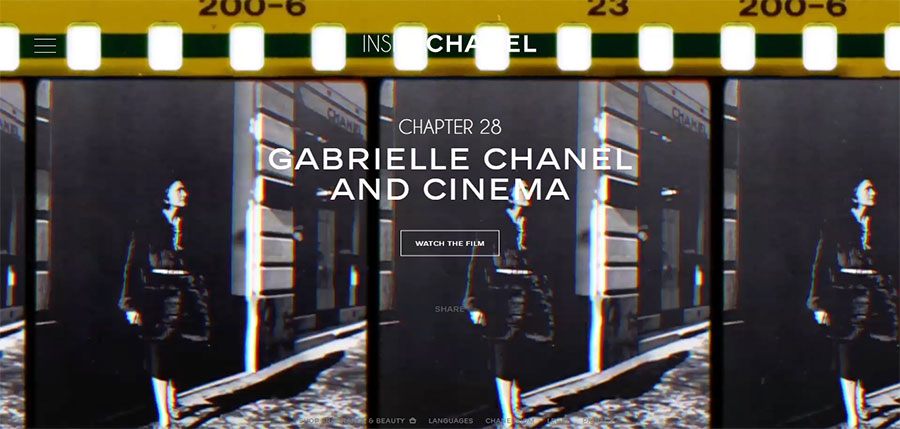
source : https://inside.chanel.com/en/gabrielle-chanel-and-cinema
Aston Martin has always built upon their heritage. Their pride and dedication in the crafting of every car is palpable through their communication.
The adventures of the founder and their personal experiences offer a window into the soul of the brand. It is an excellent strategy used for luxury branding.
“Inside Chanel” is a chronology that elegantly allows immersion into the legendary brand. Each chapter is an intriguing narrative of Mademoiselle and the brand’s iconic fashion revelations
4. Creating a niche
One of the goals while marketing for luxury brands, is to create a separate space for them in the market. A new idea, a unique vision or something extraordinary that makes a lasting impact and classifies the brand into a category undefined. This allows the customers to involve themselves with the brand; they delve into their products and become a part of the brand’s ethos.
For example, Sabyasachi is a brand imprinted in the minds of every Indian girl, adolescent and woman. The founder, Sabyasachi Mukherjee, is hailed popularly as the King of India’s Bridal Market. In a society like India, where weddings are inclined towards opulence and abundance, Sabyasachi has let everyday Indian woman get a taste of royalty.

source : https://www.weddingsutra.com/vendor-profile/sabyasachi-mukherjee/264
Apple focuses on something they call their Unique Value Proposition (UVP). It is essentially an entity that allows them to mark themselves apart from everyone else in the market. It enables them to convince a customer to almost certainly pay more - quite a lot more - for an iPhone than any other smartphone. Apple’s tagline “Think Different”, although not officially used now, still remains in the minds of people. They associate themselves with the tagline and to the brand. It makes them feel unique and extraordinary. Being different is a matter of personal pride in today’s times.
5. Sense of exclusivity
High prices, wait lists, pre-order lists and limited editions are some tactics that makes exclusivity tangible. Luxury brands make it difficult for consumers to buy their products, they dominate their clients. This leads to rarity and reflects positively upon the extraordinary nature of the owner of such a coveted piece. Luxury brands do not respond to rising demand. They let the sense of scarcity work for their brand. If it was widely available, then many would have it! Luxury brands create a spirit of competition even within those precious loyalists of the brand. It drives the customer to intensely want this product which was made “just-for-them!”
The Hermès Birkin Bags are the most valuable bags in the world! They are said to be a better investment than stocks or gold. The world's most expensive bag is an Hermès Himalaya Birkin sold at $500,000. Made for Jane Birkin by Monsieur Dumas was a handbag big enough to carry domestic belongings. The Birkin Bags are made spacious and sophisticated - highly functional luxury. They are the most exclusive bags today, considered to be the ultimate status symbol. Each bag is made entirely by hand out of superior elements such as oh-so-rare natural cowhide, calfskin and ostrich leather.
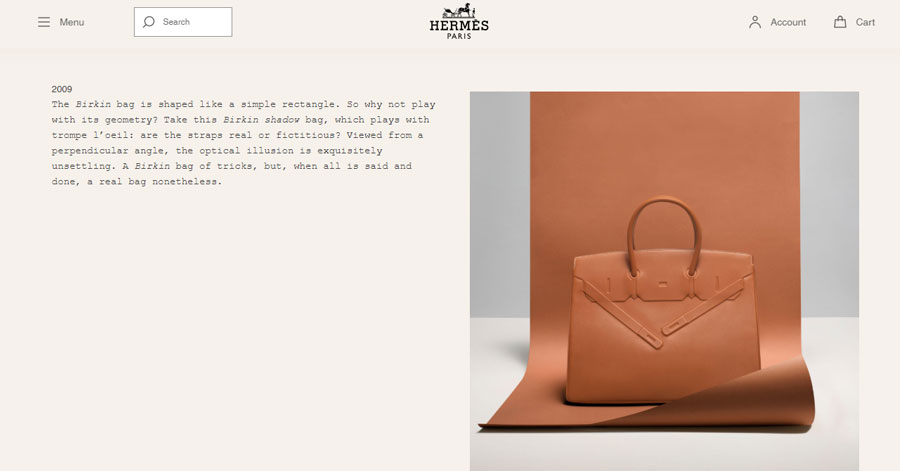
source : https://www.hermes.com/us/en/story/106191-birkin/
Hermès used to have a wait-list for the Birkin bags but now its nearly impossible to acquire a Birkin bag directly from Hermès. The official reason is stated to be the quality of craftsmanship and the attention to detail. Artisans are trained for 3-4 years before they’re allowed to even touch the hide. A single artisan completes the process of creating the Birkin Bag using 10% of the hide. The talk surrounding the prestigious Birkin bags and the limited availability make the lucky owners and buyers of the bag feel a sense of achievement! It helps them develop a strong, intimate bond with the brand.
6. Sensory Branding
Engaging with all the senses of the customer to deliver a holistic experience is sensory branding. It creates a powerful physical and emotional connection with the customers to create an impressive impact.
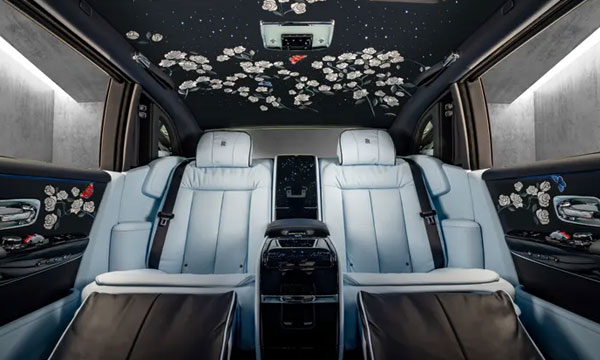
Rolls Royce put together a sensory branding campaign based on the exceptionally strong scent of their leather upholstery. They placed a scent strip in the Architectural Digest magazine to replicate this aroma of leather. It took them a year to perfect the essence - mixed with the remarkable leather were the subtle scents of the plush carpeting, the camelhair headliner and the other fancy essentials that could be detected in the back seat of a Rolls.
Another example would be “The Sound of Chanel” playlists. Chanel teamed up with Apple Music to release the soundtracks played during the brand’s fashion shows. The brand partnered with artists such as Ibeyi, Angèle, Soo joo Park, Charlotte Cardin and others to exhibit the modern ideology that it stands for. The vast artist range ensures that there’s a song for everyone while the playlist transports the listeners to a glam runway show.
By appealing to all the sensory channels of a customer, luxury brands stand to forge lasting attachments with him/her. It helps build a memorable experience each time a customer comes in touch with the many versatile aspects of the brand.
7. Out of the Box
Luxury Branding is all about creating the extraordinary. To allure customers and to carve a unique space in their minds, luxury brands have to go above and beyond. Everyday, the expectations from the brands change and to keep up with those, while maintaining charm and charisma, is a genius task.
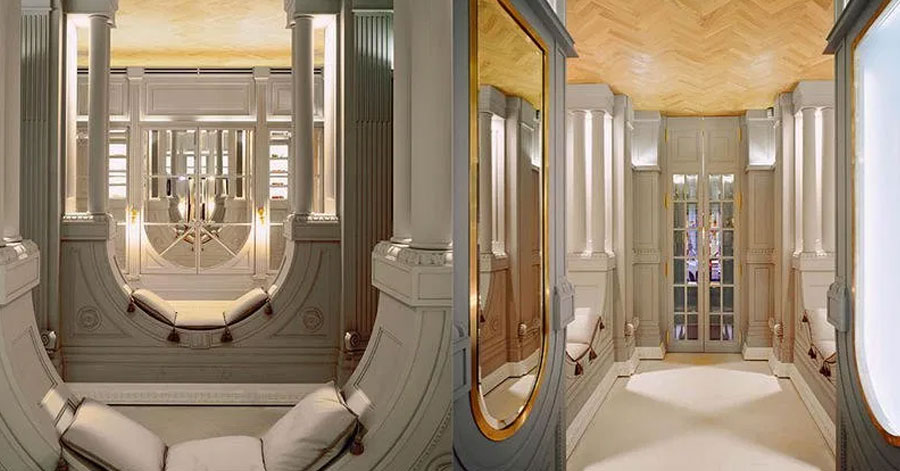
source : https://plainmagazine.com/the-most-incredible-shop-interiors/
Viktor & Rolfe is a fashion house which specializes in avant-garde designs. It seeks to alter the pre-existing concepts of fashion and to blend the ideas of art and fashion. Viktor & Rolfe opened an “Upside Down Store” in Milan to crystallize their distinct reputation as a patron of unconventional designs. It expressed through an amalgamation of historical ideas and styles, a desire to turn the world Upside-Down. No compromise was made on the quality of the structure. Full herringbone oak parquet made the ceiling, custom-made gold leaf chandeliers burgeoned out of the floor and the decorative arches served as seating in the store!
8. Personal is priceless
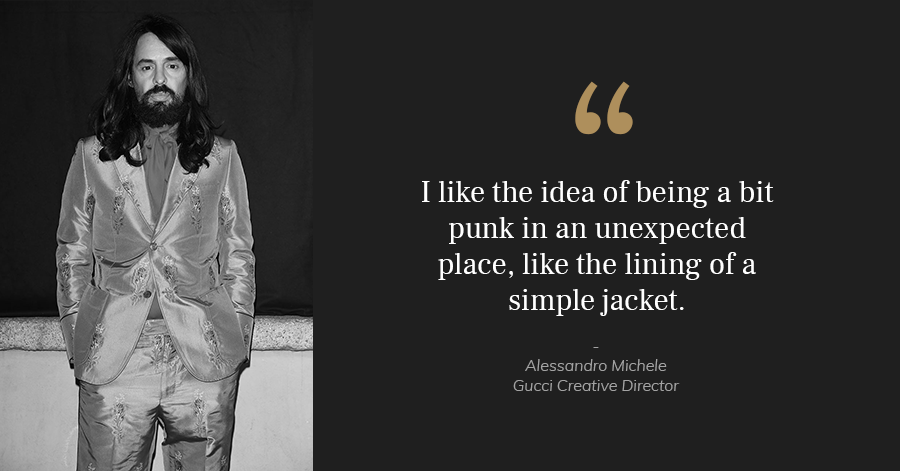
source : https://hypebeast.com/2019/2/guccis-alessandro-michele-blackface-controversy-apology-letter
If a product is an embodiment of a buyer’s persona, does it remain as a brand or become a `fragment of their existence? While advertising for luxury, the prominence is given to the customer’s ideas of “who I am” rather than “what I have.” Personalisation is the embellishment provided by the brand to a client. Unique pieces of fashion have always been revered as prized possessions - initials on Gucci’s Ophedia tote bags or Louis Vuitton’s luggage bags. However, advancements in technology along with the demand for customized artistry are furthering the design of personalization. All advertisment strategies for luxury brands take into consideration the personalization factor as a key element.
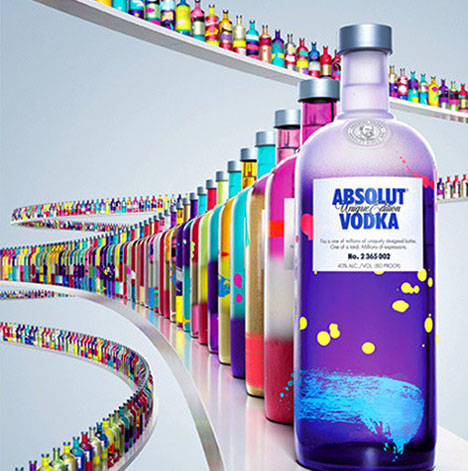
source : https://www.huffingtonpost.in/entry/absolut-unique-vodka-bottles_n_1882025?ri18n=true
Gucci DIY was introduced by Alessandro Michele to declare his love for punk and non-conformity. The Do-It-Yourself service champions the idea of self-expression. The customers can choose from a variety of bombers, leather jackets and Ace sneakers and then symbols - a daggered heart or a king snake or a bee, can be embroidered onto it.
In 2012, Absolut Vodka, the leading brand of premium original or flavoured vodka, rolled out 4 million custom bottle designs. Each bottle had its own identifying number and a distinct design different from every other bottle. The campaign was prominently aimed at connoisseurs of collectible branded bottles.
9. Use of digital marketing
Luxury brands are now laying more and more emphasis on a solid digital presence with a strong digital marketing strategy. According to Forrester Analytics, e-commerce will drive 59% of luxury sales growth by 2023 globally. Advertising digitally is also a powerful tool to increase brand equity.
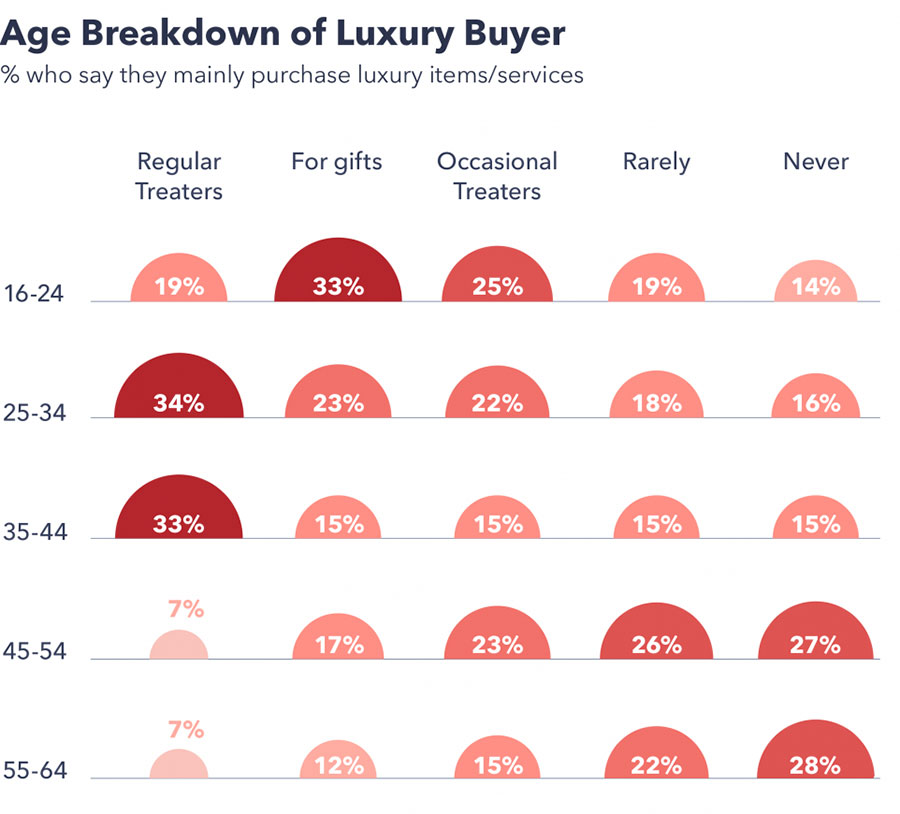
The modern luxury consumer is now perceived to be falling into younger age brackets. Millennials (ages 23-36) having matured in their careers, are at the zenith of their spending age. The younger Generation Z (ages 16-22) is also investing in the luxury market as the older members of group are taking their first steps into the workforce.
Reaching this cluster of digital natives at points, where they spend most of their time, is now an essential strategy for luxury brands.
(a) Social media
Luxury brands are now, more than ever, taking an interest in and actively building their presence on visual social networks. They are creating a curated lifestyle look that appeals to the ambitions and tastes of these younger generations. The brand’s presence on social media reinforces the premium glamour.
Influencer marketing forms a big component of social media marketing. Some influencers have millions of followers while micro-influencers also have loyal believers who trust their words. Asking an influencer to collaborate with a luxury brand also boosts her/his popularity and credibility and generates more followers.
Social media marketing strategies also include boosts from the platform itself. Instagram Ads and Facebook Ads allow for a good measure of control over segmentation and targeting.
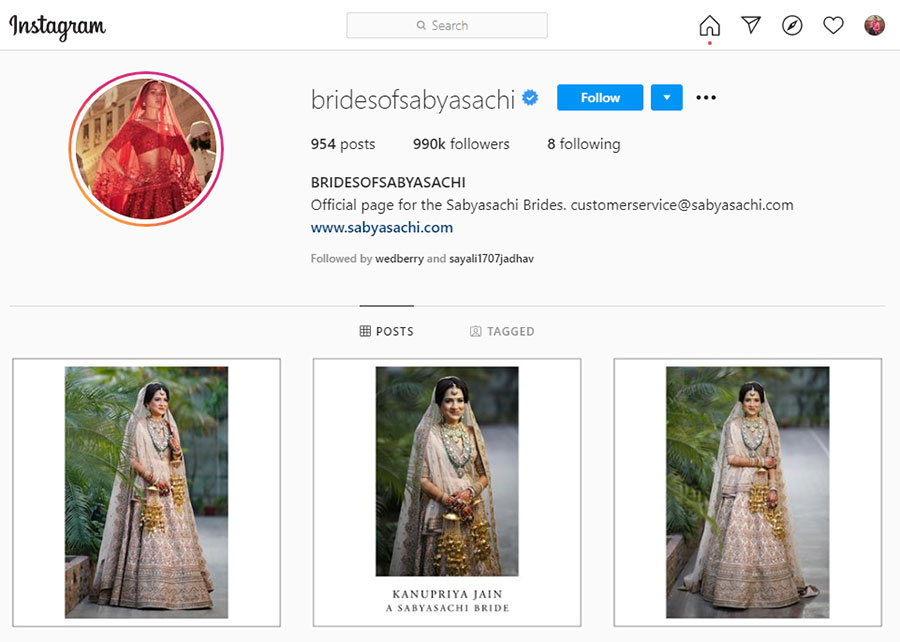
source : https://www.instagram.com/bridesofsabyasachi/?hl=en
Making an effort to reach people personally, forges a relationship that builds positivity. Sabyasachi has a separate official Instagram account called “Brides of Sabyasachi.” It features beautiful Indian brides enjoying their special day looking absolutely stunning in their Sabyasachi apparel. Furthermore, the top Bollywood actors have worn the Sabyasachi label on their weddings. Hence, such a page celebrating the “commoners” is heartening gesture that makes them feel significant and unique.
(b) Digital on Google
Luxury brands have scope to achieve the optimum out of digital marketing. Search Engine Optimization, Search Engine Marketing, Demographic (and Income) Targeting, Negative Keywords, etc. are all different tools used to maximize reach and generate leads. The complete guide to Luxury Digital Marketing 2020 is an all-inclusive introduction to Luxury Digital Marketing.
(c) The merging of the digital and the physical
Luxury brands are now changing the landscape of their retail stores to accommodate the switch towards digitalization. They are transforming their brand to incorporate innovative designs that would improve the shopping experience for their customers.
Burberry’s Regent Street Flagship store underwent two years of innovation to unveil “Burberry World Live” in 2012. “Walking through the doors is just like walking into our website,” said the then-CEO of Burberry, Angela Ahrendts. The store featured on-screen technology, digital signage and RFID. All of these provided the customers with instant access to information about the products - from craftsmanship to catwalks.

source : https://www.lsnglobal.com/big-ideas/article/6317/retail-analysis-burberry-world-live-luxury-brand-experience-meets-digital-integration
Ted Baker made innovative use of 360 video and Instagram stories with a campaign called “Keeping up with the Bakers.” The viewers could purchase the clothing items worn by the Bakers by clicking on the links that took them directly to the Ted Baker website.
10. Good old quality customer service
Excellent customer service will never go out of style! Customer satisfaction is a thumb-rule for high-end brands. Nothing builds a brand as effectively as quality care for the customers. The royal treatment, the voice, tone, attitude, the product knowledge, the premium personalisation, consistent and clear communication help cultivate brand loyalty and repeat purchases. It is good to remember that it’s five times easier to retain a customer than to find a new customer.
Many luxury brands host private, limited-invites, member-only events for the chosen privileged as a part of their customer services. Exclusivity is again one of the age old advertising strategies for luxury brands that still works if executed smartly.
The Harley Davidson’s Harley Owners Group (H.O.G.) allows Harley to connect and to form lifelong bonds with its customers. The HOG members enjoy a myriad of benefits including member-only biker rallies, charity drives, merchandise, roadside assistance and reward programs. H.O.G. members even get to provide direct input into the new product creation and launch by Harley. The iconic brand’s endeavor to generate higher rates of customer engagement ensures that Harley spends less than $1 million each year on advertising.
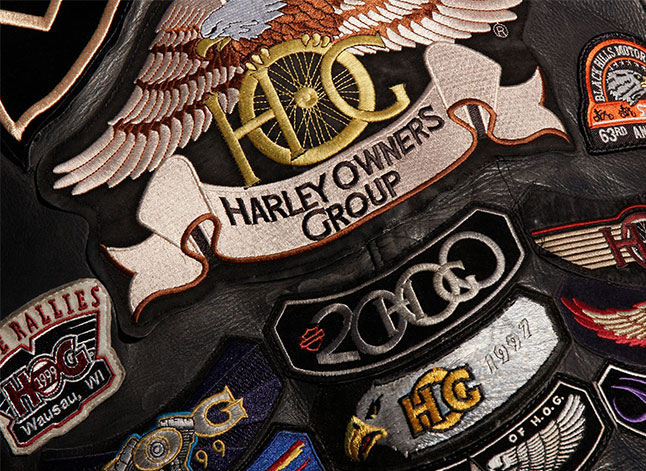
source : https://www.quizeverx.com/index.php?main_page=product_info&products_id=608815
Luxury has always been about the emotions invoked by the brand, rather than the value of the product itself. Every successful advertising startegy for a luxury brand has had a lot of thought, discussions and efforts deployed for it. A bold expression of everlasting extraordinary, advertising for luxury is an art form in itself.
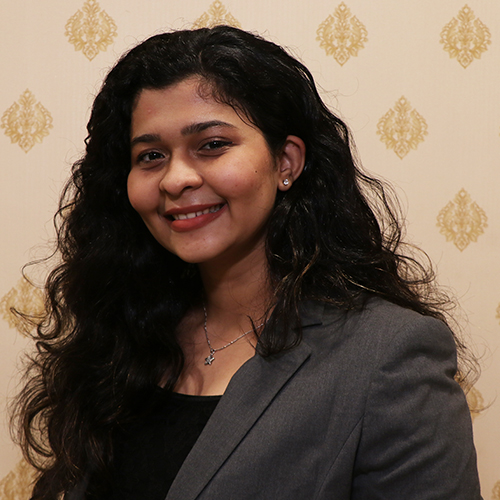 Rajeshwari Patwardhan
Rajeshwari Patwardhan


Comments
No comments yet.
Add Your Comment
Thank you, for commenting !!
Your comment is under moderation...
Keep reading luxury post